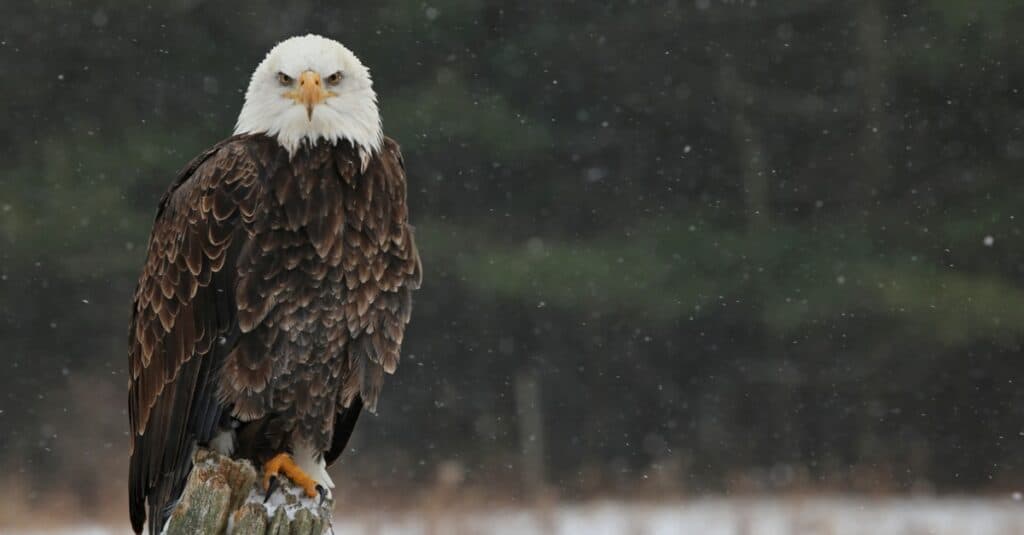
The post Meet the Animals of Cuyahoga Valley National Park, From Bald Eagles to Woodchucks appeared first on A-Z Animals.
Cuyahoga Valley National Park is a wilderness haven between the urban centers of Cleveland and Akron, Ohio. In 2024, over 2.5 million visitors came to enjoy over 140 miles of hiking and biking trails, train rides through scenic valleys, and quiet moments spotting wildlife among wetlands and woods. With more than 30 mammal species, 200 birds, and dozens of reptiles and amphibians, the park is a thriving sanctuary. Here is a selection of the animals visitors are most likely to encounter, arranged alphabetically.
Bald Eagle (Haliaeetus leucocephalus)

)
©iStock.com/ca2hill
They were once on the verge of extinction, but now bald eagles have made a strong comeback. Along the Cuyahoga River, they have an ideal nesting site in tall trees near open water with good fishing. They are most conspicuous in winter and early spring, when adults perch near rookeries or soar over the marshes. It can take some patience to spot one, but it’s a thrill that’s worth the wait.
Big Brown Bat (Eptesicus fuscus)
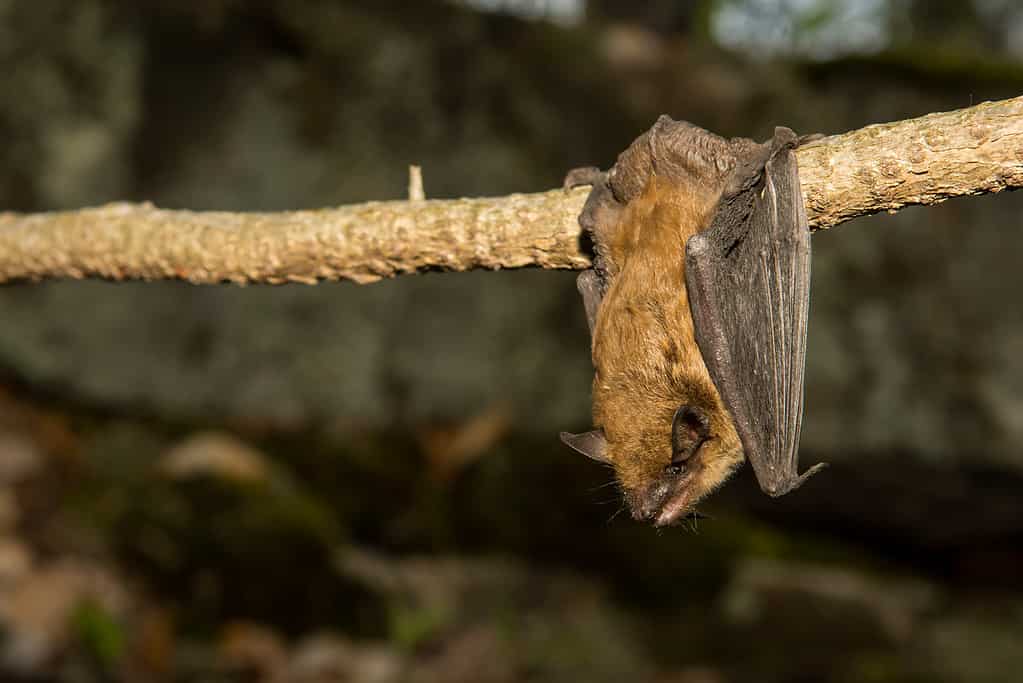
)
©JasonOndreicka/ via Getty Images
Seven bat species fly in Cuyahoga Valley, swooping through fields, marsh edges, and streams at dusk and eating tons of mosquitos, moths, and beetles. The big brown bat (Eptesicus fuscus) is especially widespread. Summer evenings provide the best chance to see their erratic flights over open water, as they catch dinner and sometimes skim the surface to scoop up a drink.
Beaver (Castor canadensis)
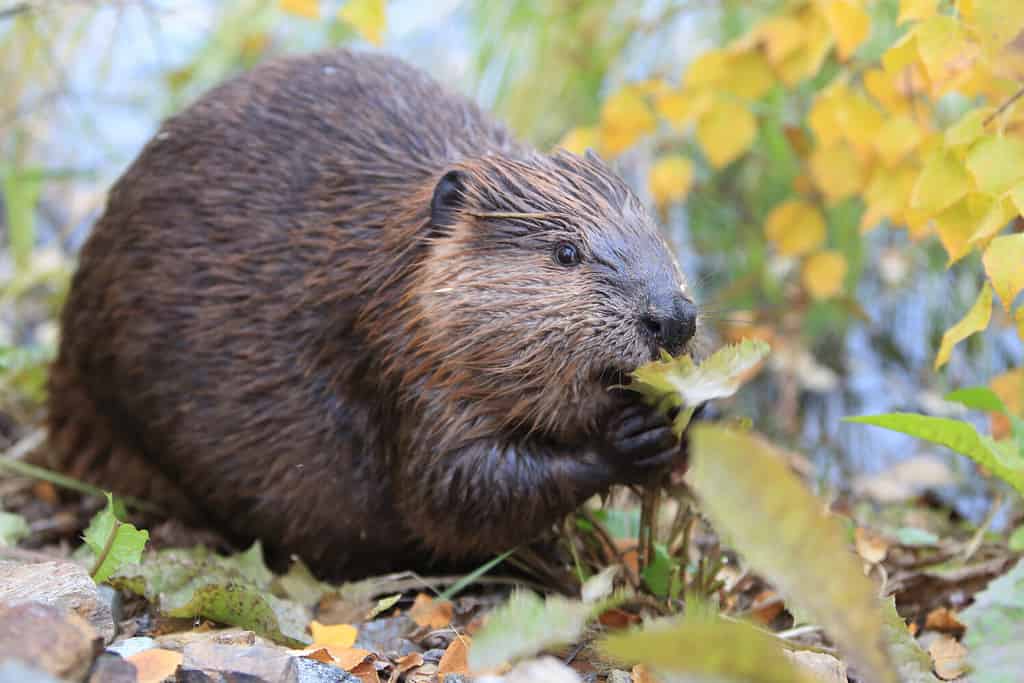
)
©Frank Fichtmueller/Shutterstock.com
Cute and industrious engineers, beavers shape wetlands by building lodges and dams that slow streams and create rich marshes. Their work is visible at Beaver Marsh. They glide around the water at dawn or dusk, chewing willow shoots among the lily pads. Piles of wood chips and gnawed stumps betray their presence even when they remain hidden. Though not seen every day, patient watchers at marsh boardwalks often spot them.
Chipmunk (Tamias striatus)
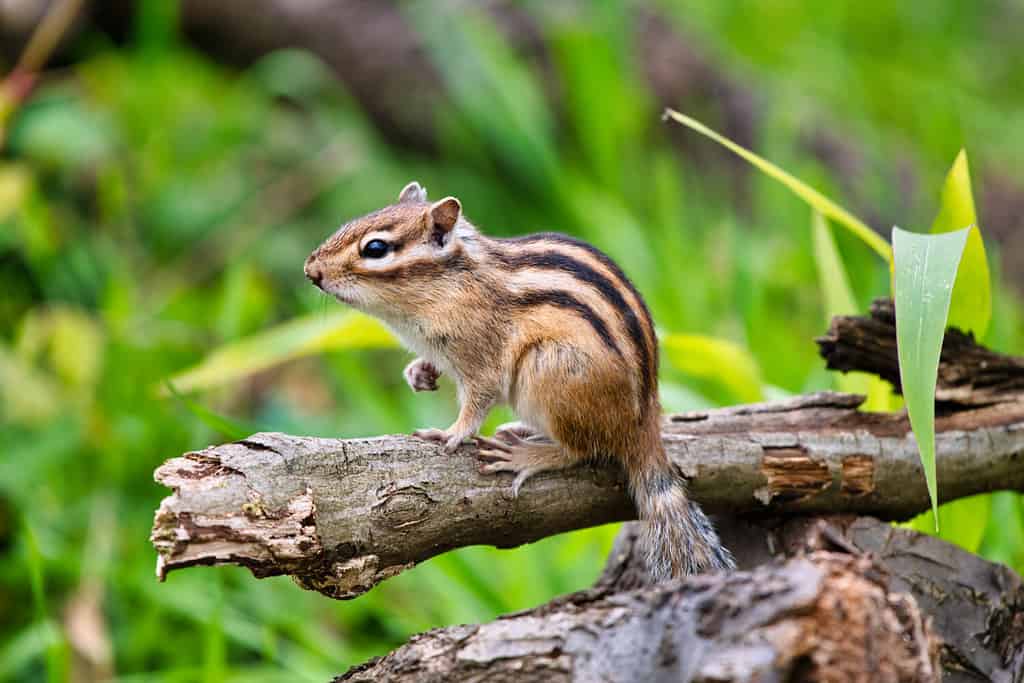
)
©Tatsuya Nishizaki/Shutterstock.com
Eastern chipmunks are energetic small mammals that scurry along trails and stone walls. They stuff seeds and nuts into their cheek pouches, retreating to leaf-lined burrows to store them. You’re pretty much guaranteed to see chipmunks on a hike in Cuyahoga. Their striped backs, bright eyes, and constant chirps make them easy to recognize.
Coyote (Canis latrans)
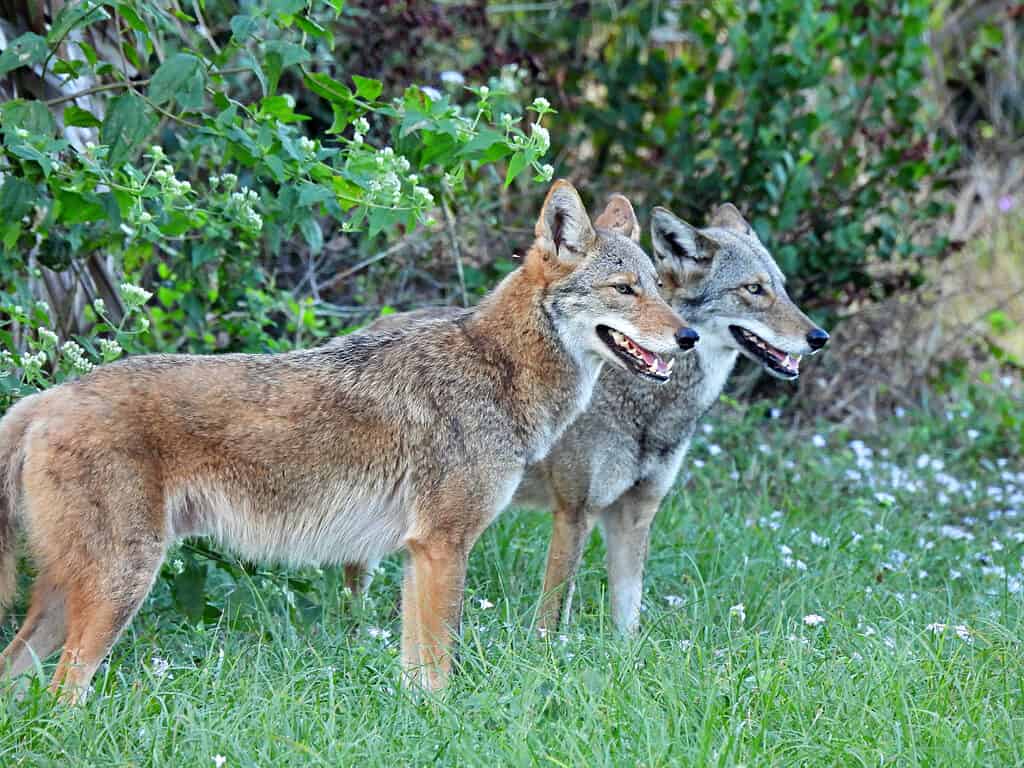
)
©iStock.com/passion4nature
As in many parts of the country, coyotes returned to Cuyahoga Valley in the 1980s. They patrol meadow edges and woodland clearings, hunting mice, rabbits, and insects while also feeding on berries and fallen fruit. At night, their yips and howls echo across valleys, a wild reminder that predators have reclaimed the park. They keep a wary distance, but it’s not unusual for visitors to see them at dawn or dusk.
Eastern Cottontail (Sylvilagus floridanus)
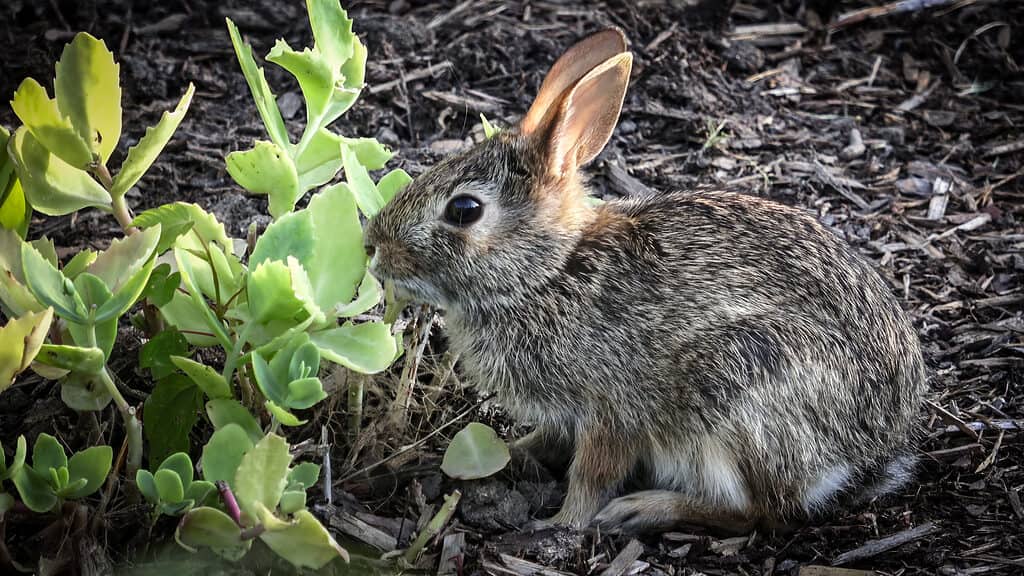
)
©Labrynthe/Shutterstock.com
These rabbits are common grazers in grassy fields and shrubby edges. They feed on clover, grasses, and tender shoots. Nearly every predator in the park eats them, so they are justifiably nervous creatures, often freezing in place when startled before darting away in zigzags. They are plentiful and one of the easiest mammals for visitors to spot in open meadows.
Garter Snake (Thamnophis sirtalis)
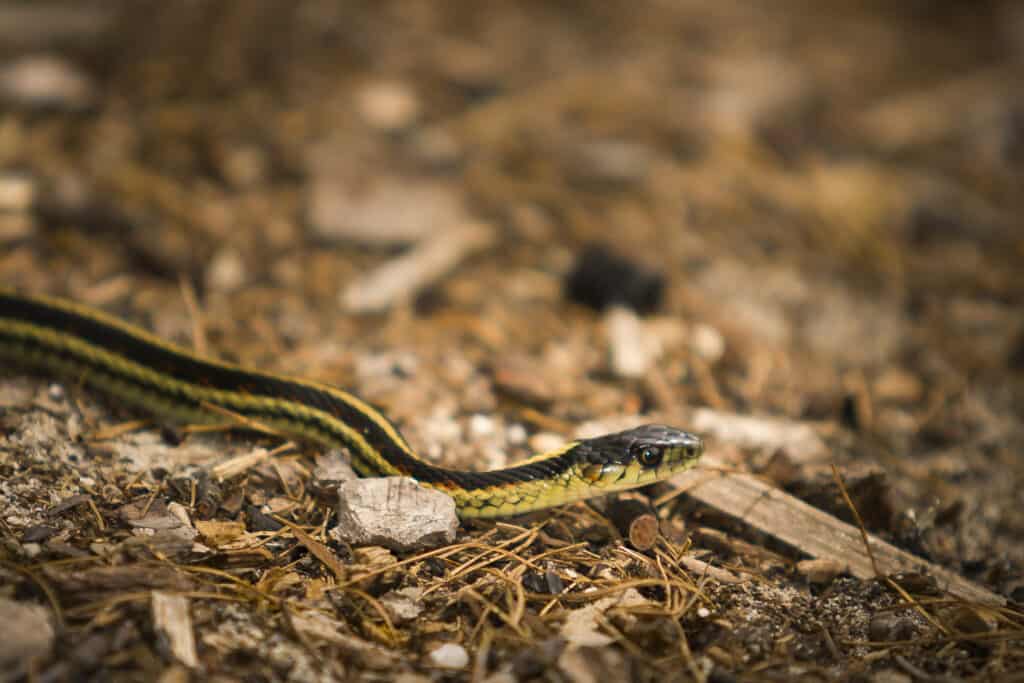
)
©iStock.com/SolomonCrowe
One of the most plentiful reptiles in the park is the garter snake. They bask along trails and slither quickly into grass when approached. Feeding on frogs, insects, and earthworms, they are harmless to humans. They are often seen during warm months. As cold-blooded creatures, they use their environment to regulate their body temperature, so when the temperature is cooler, you might find one basking on a rock or a sunny patch on a trail.
Gray Fox (Urocyon cinereoargenteus)
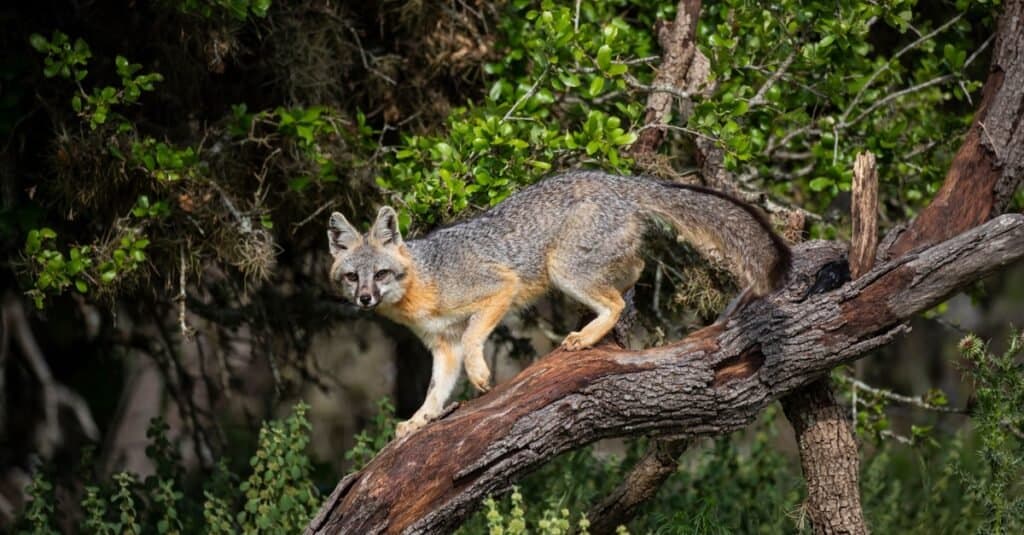
)
©Danita Delimont/Shutterstock.com
Cuyahoga Valley has both red and gray foxes. Aside from their color, a significant difference between them is that gray foxes hunt in denser woodlands and are able to climb trees. At night and in the early morning, they glide ethereally through the forest, hunting birds and small mammals. They are not very abundant in the park, so spotting one is a noteworthy experience to share with fellow visitors.
Gray Squirrel (Sciurus carolinensis)
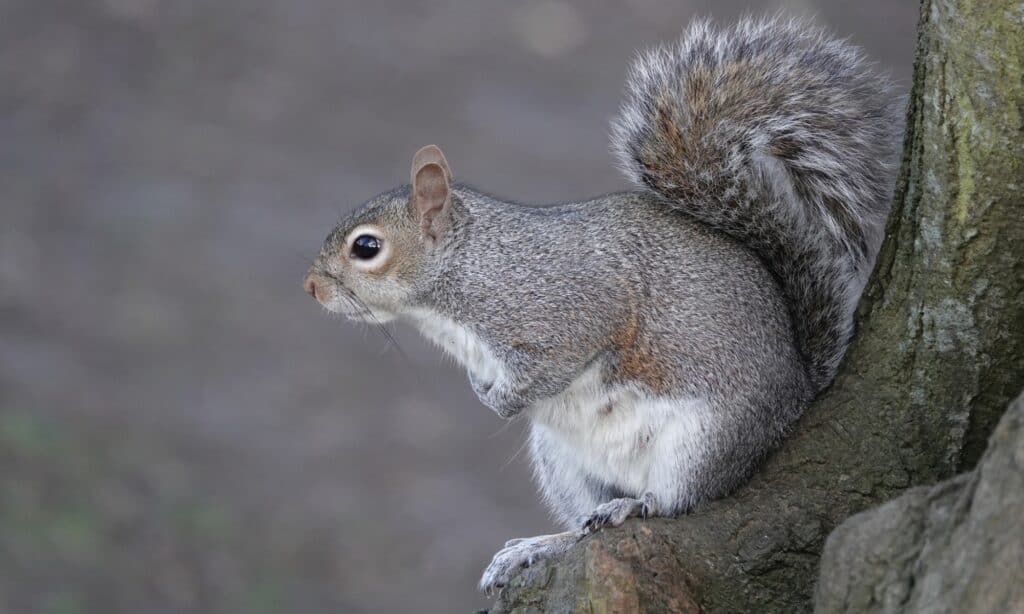
)
©iStock.com/Nigel Harris
It would be shocking if you did not see a gray squirrel while visiting the park. They are abundant, leaping agilely through tree branches, chasing one another around tree trunks, and scurrying around the forest floor looking for and burying acorns and nuts. They can’t possibly remember where they’ve hidden all their food, so some forgotten nuts will sprout and grow into the next generation of trees for future squirrels.
Great Blue Heron (Ardea herodias)
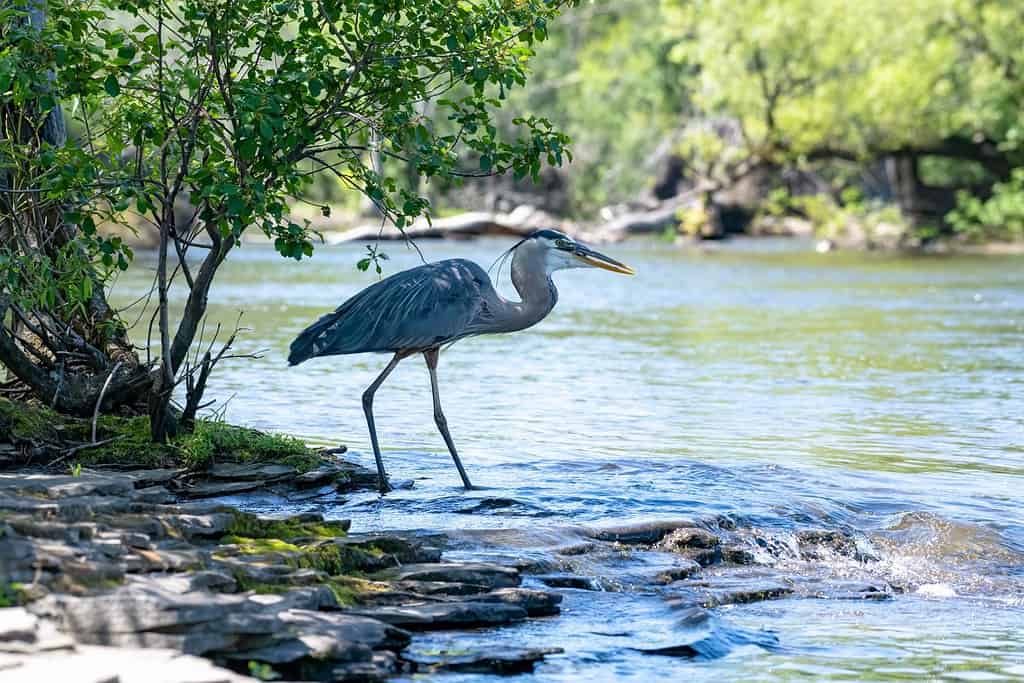
)
©Karen Hogan/Shutterstock.com
Iconic great blue herons are wetland birds with long legs and slow, deliberate wingbeats. They stalk fish in shallow marshes and gather in large nesting colonies called rookeries. Their croaking calls and striking silhouettes make them unmistakable. They are a constant presence in wetlands, easily observed from boardwalks and canal edges.
Green Frog (Lithobates clamitans)
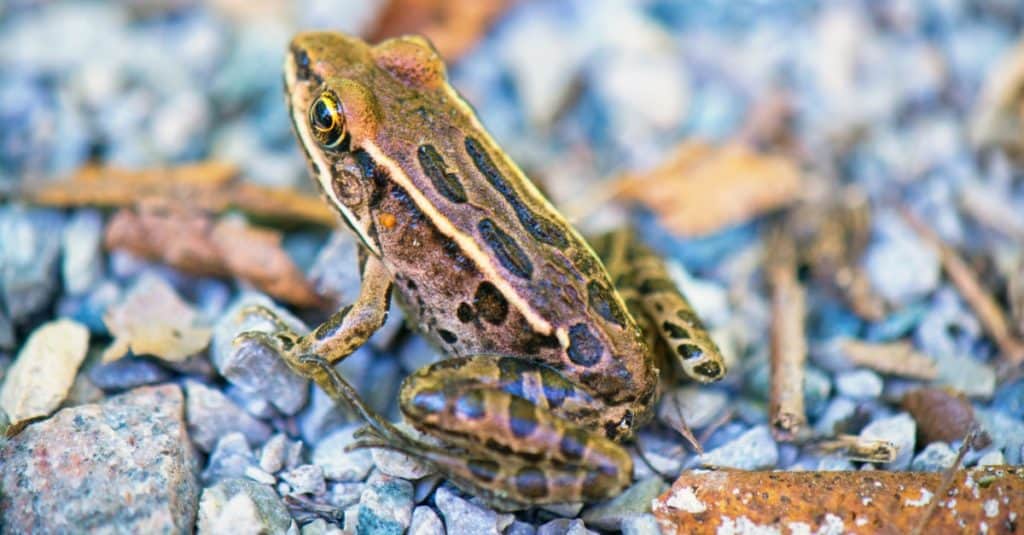
)
©iStock.com/rgbspace
Common in ponds and wetlands, green frogs are noticeable for their loud “plunk” calls that echo on summer nights. They perch on lily pads or mudbanks, leaping into water when disturbed. Tadpoles overwinter before transforming the following spring. Green frogs are abundant, and quiet visitors along marsh edges often see or hear them without difficulty.
Meadow Vole (Microtus pennsylvanicus)
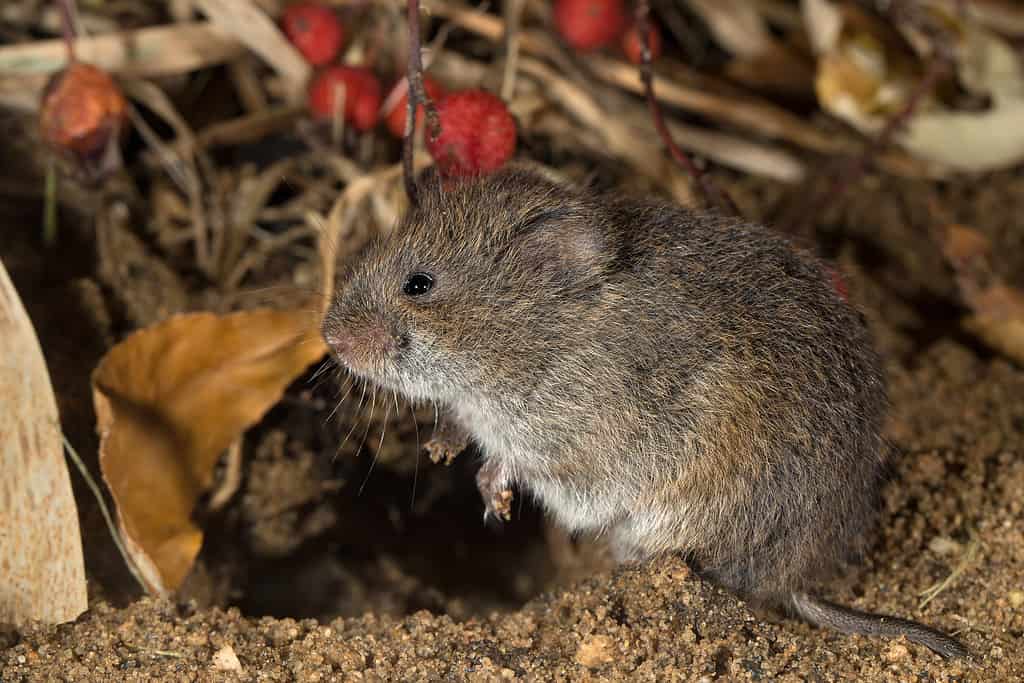
)
©Agnieszka Bacal/Shutterstock.com
These small mammals carve tunnels through grassy fields, leaving surface runways most visible after the snow cover melts. They feed on grasses and seeds, providing an essential link in the food web for hawks and owls. Meadow voles are abundant and form a crucial prey base in the ecosystem of the park. However, since they spend most of their time underground, you are most likely to spot only their trails in open meadows.
Muskrat (Ondatra zibethicus)
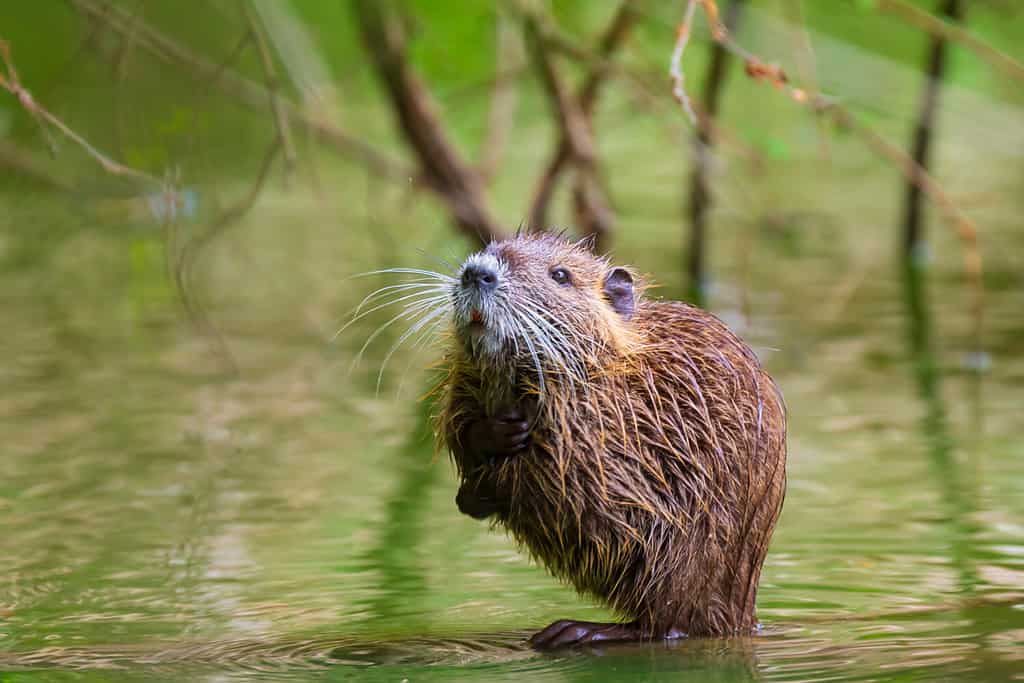
)
©SanderMeertinsPhotography/Shutterstock.com
People often confuse muskrats for beavers, but muskrats are smaller and have thinner, flat tails oriented vertically, and build lodges on the edges of ponds and marshes rather than building dams with lodges in the center of the resulting pond. These wetland dwellers feed on aquatic plants and sometimes pause on floating logs to groom. The best chance to see them is in the early morning or late afternoon, when they swim slowly across the water.
Northern Water Snake (Nerodia sipedon)
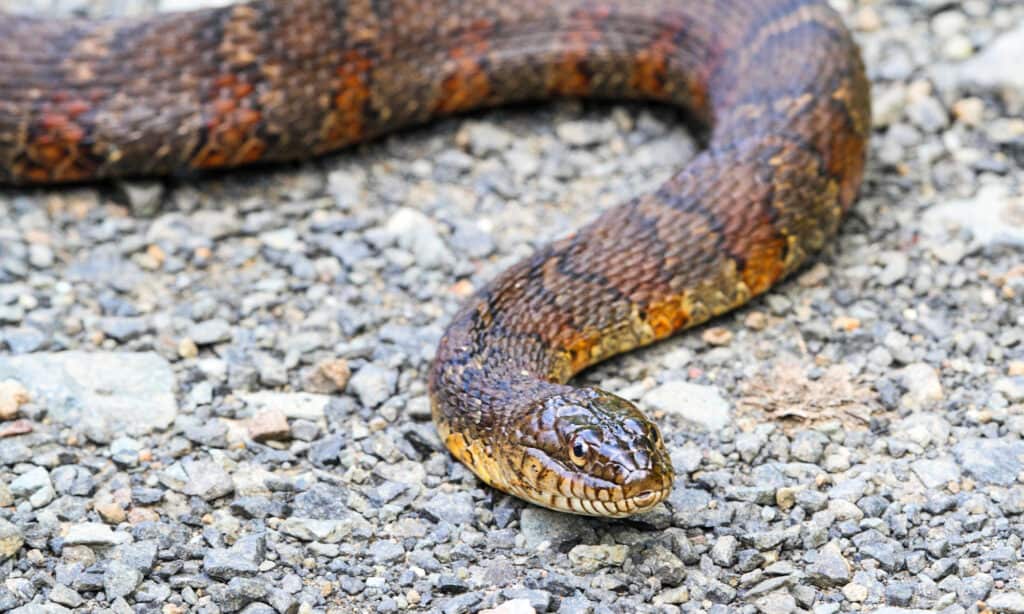
)
©Steve Byland/Shutterstock.com
Along streams, ponds, and wetlands in Cuyahoga Valley National Park, the northern water snake is one of the most frequently spotted reptiles. These nonvenomous snakes often bask on rocks, logs, or low branches near the water’s edge, making them easy to notice. Their patterned brown or gray bodies can look intimidating, but they play a harmless role in the ecosystem, feeding on fish and amphibians. Visitors scanning the banks or watching the surface of a quiet pond on a warm day are likely to see one swimming or coiled in the sun.
Opossum (Didelphis virginiana)

)
©Karel Bock/Shutterstock.com
North America’s only marsupials, opossums, shuffle through thickets and along roadsides after dark. They consume fruit, insects, and carrion, cleaning up what other animals leave behind. When threatened, they sometimes collapse and “play possum,” feigning death until danger passes. Though not bold, they are frequent nighttime wanderers and occasionally turn up near campsites.
Painted Turtle (Chrysemys picta)

Painted
Turtle (Chrysemys picta)
©Ethan Daniels/Shutterstock.com
On warm, sunny days in Cuyahoga Valley National Park, it’s common to see turtles lined up on logs or rocks, soaking in the light. Among them, the painted turtle stands out with its dark, smooth shell edged in bright red and yellow streaks. Quick to dive into the water if startled, these turtles spend much of their time basking before returning to feed on aquatic plants, insects, and small fish. Their presence in ponds, marshes, and quiet streams makes them one of the park’s most visible reptiles.
Raccoon (Procyon lotor)
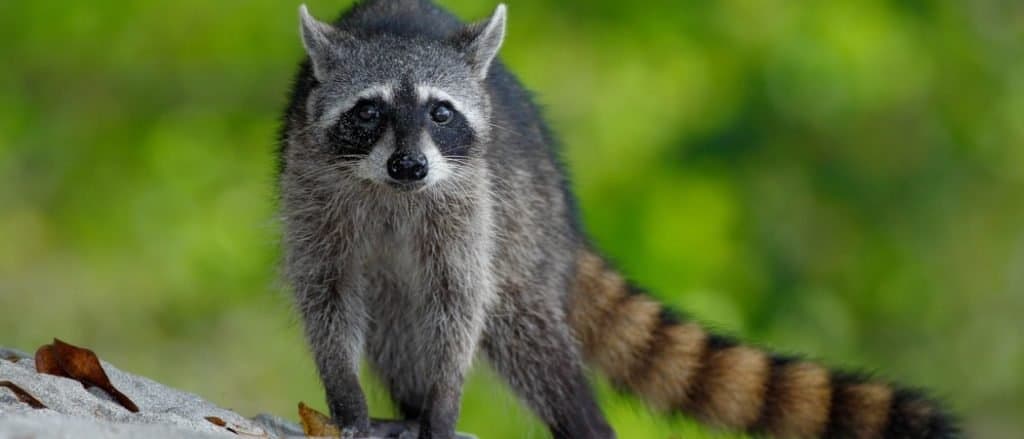
)
©Ondrej Prosicky/Shutterstock.com
These striped bandits are clever, adaptable foragers that thrive wherever water is nearby. They wash crayfish, clams, and fruits in streams, leaving hand-shaped prints in mud. Active mainly after dark, they emerge at dusk to patrol wetlands and camp edges. Though cautious, raccoons are numerous and not hard to find, particularly in the evening.
Red Fox (Vulpes vulpes)
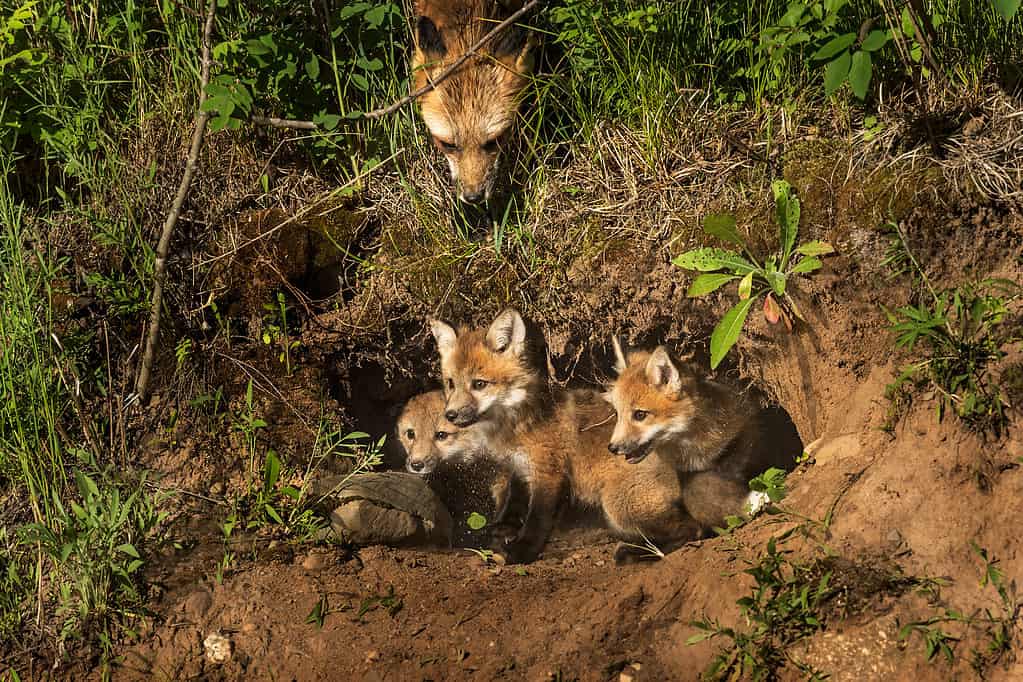
)
©Geoffrey Kuchera/Shutterstock.com
Unlike gray foxes that prefer wooded areas, red foxes tend to favor open meadows and fields, where they stalk small animals and insects and eat whatever fruit and berries they can find. Though wary of people, red foxes occasionally pause to watch from a distance before disappearing into cover. Visitors who keep a sharp eye out and stay quiet might get rewarded with a glimpse of one.
River Otter (Lontra canadensis)
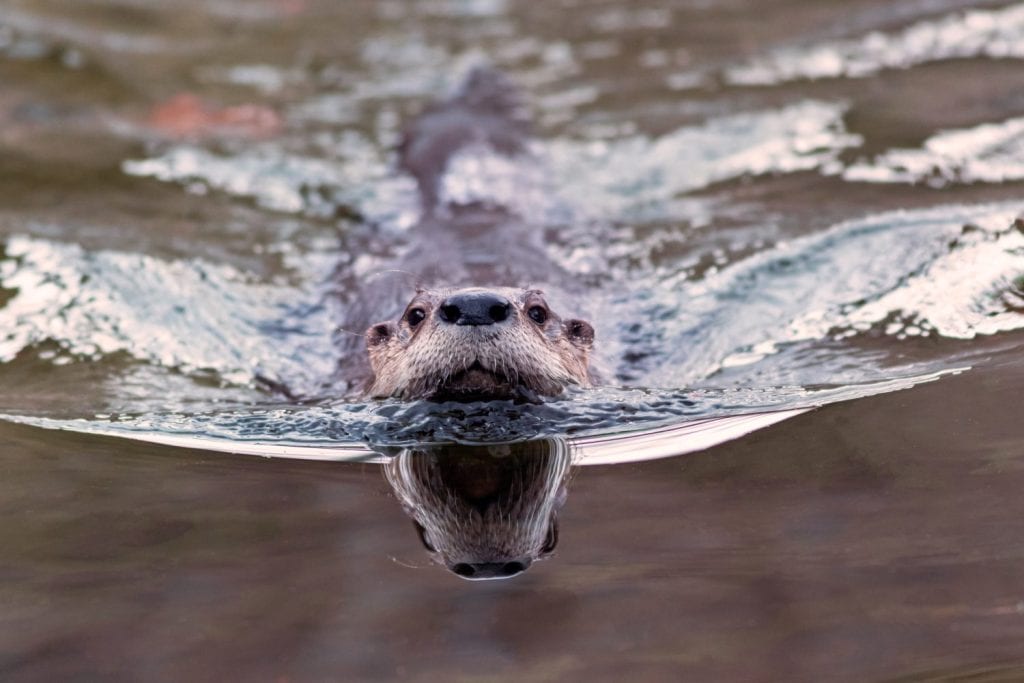
)
©Rabbitti/Shutterstock.com
Once absent from much of Ohio, river otters have been reintroduced in Cuyahoga Valley. They are sleek swimmers, leaving streams of bubbles as they dive for fish and crayfish. Otters are playful, often rolling on muddy banks or sliding into the water. While not common, early risers sometimes spot them in marshes or along slow rivers. And their antics make it well worth the effort to seek them out.
Snapping Turtle (Chelydra serpentina)
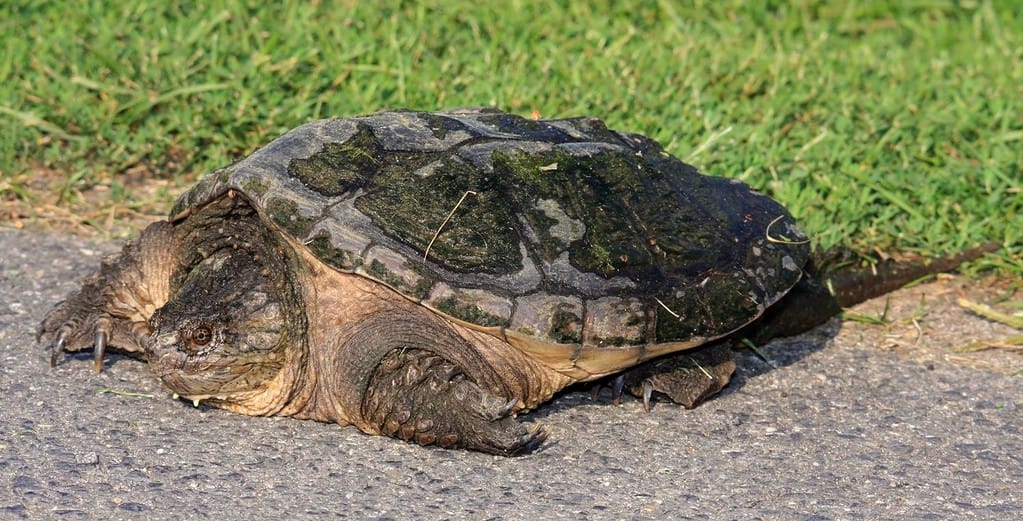
)
©Joseph M. Arseneau/Shutterstock.com
The snapping turtle spends most of its time hidden in the muddy bottom of a pond, waiting to ambush fish, frogs, or other prey. Though they can appear intimidating on land, they usually avoid people and prefer to stay underwater. Patient observers might spot one surfacing for air or moving slowly along the edges of marshes and ponds.
Spring Peeper (Pseudacris crucifer)
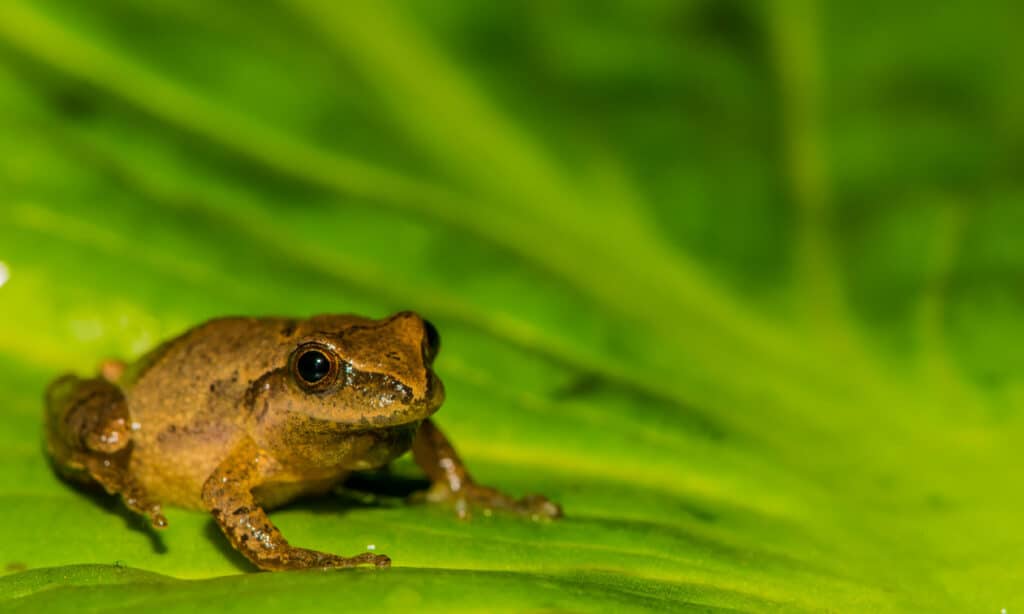
)
©Jay Ondreicka/Shutterstock.com
Tiny spring peepers are frogs famous for their piercing calls in early spring. Their chorus marks the arrival of warmer days, echoing from every marsh and pond. Though only an inch long, they can be heard far more often than seen. They are widespread and easily detected by sound in March and April evenings.
Turkey (Meleagris gallopavo)
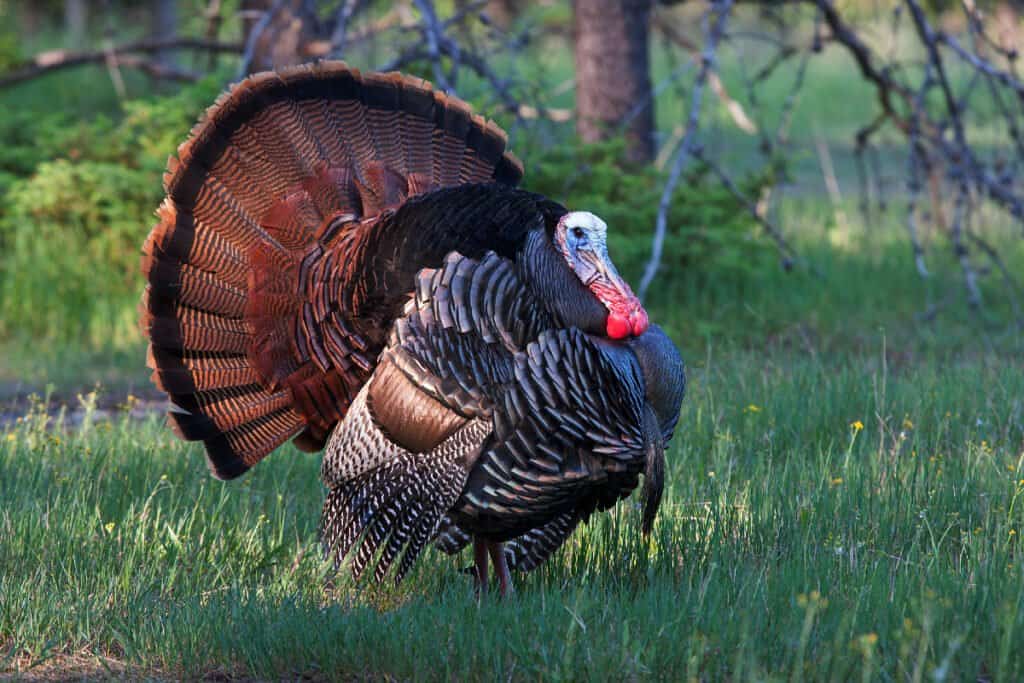
)
©Jim Cumming/Shutterstock.com
Wild turkeys roam forest edges and clearings in flocks that can number dozens. Males display extravagant tail fans in spring, gobbling loudly to attract hens. They forage on seeds, nuts, and insects while roosting in tall trees at night. Turkeys are increasingly common and often spotted from trails and roadsides.
White-tailed Deer (Odocoileus virginianus)
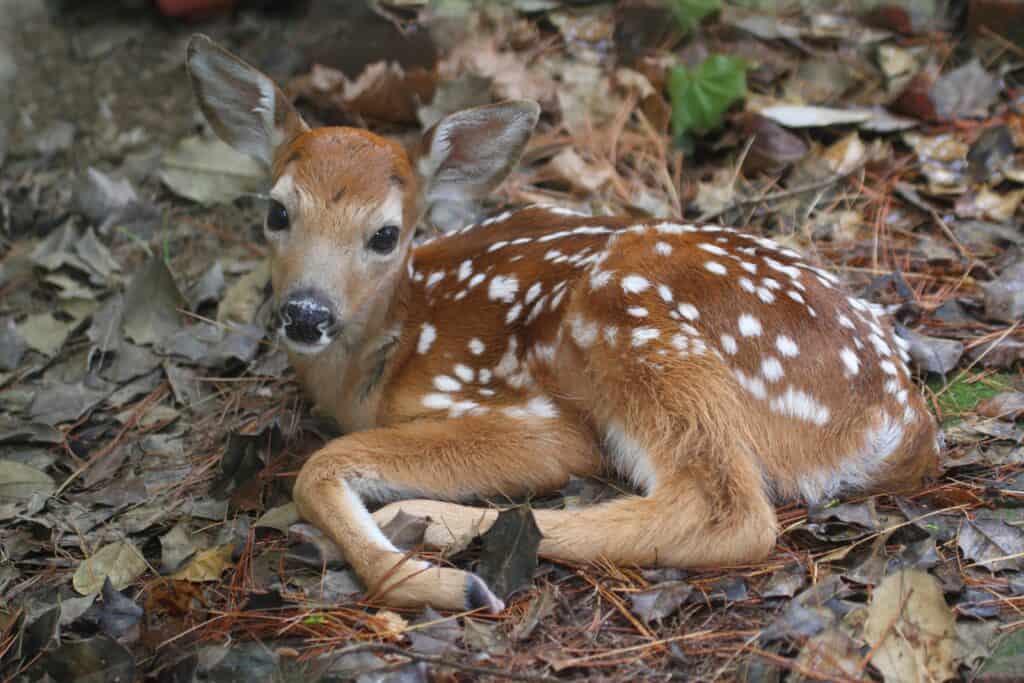
)
©Steve Byland/Shutterstock.com
The park’s largest animals, white-tailed deer, graze in meadows and along forest edges. They are active year-round, leaving distinctive tracks in snow during winter and foraging heavily in spring. In autumn, bucks display antlers and spar during the rut, the animals’ mating season. Deer are plentiful throughout Cuyahoga Valley and easily observed at dawn and dusk.
Woodchuck (Marmota monax)
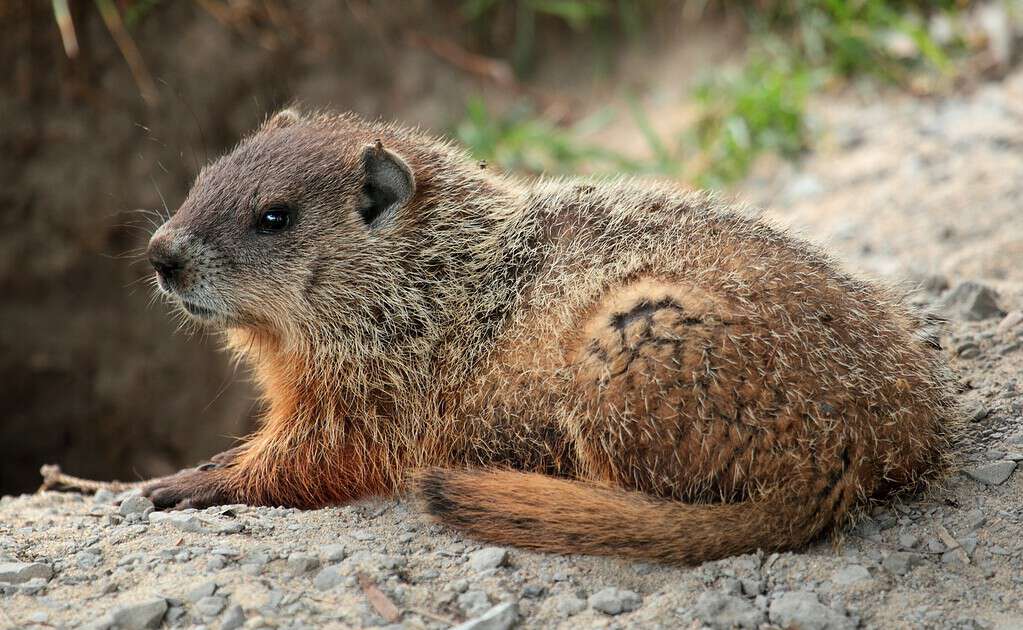
)
Also called groundhogs, woodchucks graze in fields and along sunny slopes. They dig deep burrows that provide shelter for themselves and other animals. Often seen standing upright near their holes, they retreat with a waddling run when alarmed. They are common daytime animals, most often noticed in the morning and late afternoon.
Best Times and Places to See Wildlife
Spring and fall are the richest seasons for wildlife watching in Cuyahoga Valley. Spring brings blooming wildflowers, the return of herons to rookeries, and flocks of warblers filling the canopy. Fall features peak bird migration and white-tailed deer in rut. Dawn and dusk are always prime hours, when mammals stir, birds sing, and turtles bask. Beaver Marsh, wetlands along the Ohio & Erie Canal, and forest-edge meadows are among the most rewarding spots for observing wildlife through the year.
Although Ohio is home to large urban centers, it also contains millions of acres of rural land and wilderness teeming with diverse species. Cuyahoga Valley National Park will show you what the whole state was once like in its original wild and wonderful condition.
The post Meet the Animals of Cuyahoga Valley National Park, From Bald Eagles to Woodchucks appeared first on A-Z Animals.
September 26, 2025 at 06:02PMDrew Wood
.jpeg)
.jpeg)

0 Comments